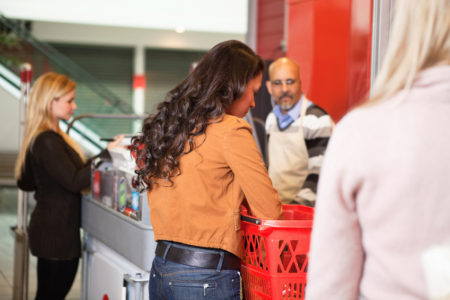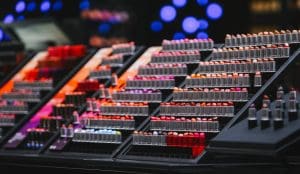It’s no secret that Christmas queues at New Zealand stores are one of the biggest turn-offs for shoppers. And just as customers get wound up as they waste time while they wait to reach the cashier, so retailers can see their good will, loyalty, and potential spend go up in smoke. But there is plenty of research around queuing that can help stores design their layouts better, make the most of their retail display cabinets and point of sale displays, and keep their customers happy.
1. Customers with full shopping trolleys move faster than small baskets:
It might seem strange but research has revealed that the average amount of time it takes to greet, pay, say goodbye and move out of the point of sale area is 41 seconds per person while the average time it takes to ring up an item is 3 seconds. This means that one person with 100 items takes 341 seconds – just short of six minutes, while a queue of four people with 20 items each (that’s 20 fewer than the first person) will actually take 404 seconds – more than a minute longer. Retailers who understand this can find ways to limit the time taken at point of sale for shoppers with baskets to help queues move faster, while also ensuring enough variety of lanes for shoppers with trolleys or baskets.
2. Single line – multiple check-outs:
Although studies have shown very few customers ever join this type of single-file queue, they are far faster than lots of parallel lines. This efficiency does come at a cost, though, for the retailer who has to find space to accommodate a long, thin line – but, if successfully applied, it offers the fastest route to handling the largest number of shoppers.
3. Know your rights (and lefts):
Research has shown that right-handed people tend to join queues to their right which means that, because there are far more of them, queues on the left tend to be shorter and faster. In order to even out this natural discrepancy, retailers can make point of sale displays on left-side queues more attractive or have more of the right-handed ones.
4. Tough customers:
Nothing slows down queues like people finding it difficult to pay, or chatting to the cashier, or who have items that can’t be scanned (such as produce), or who want information as well as a check-out. Retailers who divide their lines according to different types of product, or who have designated help-desks or information posts around the store can help cut their queues considerably.
5. Don’t let POS displays block cashiers’ views:
One study discovered that cashiers who can’t see the end of their queue don’t work as fast as ones who can see how they are able to keep their line from getting too long.
6. Keep your products well-labelled and displayed:
By having bar codes easy to find, having clothes displayed off their hangers for purchase, and by having information freely available in store, you’re going to cut down the time it takes for customers to move through the point of sale area.
7. Fairness usually trumps fastness:
Many studies have found that what irks shoppers more than waiting in line, is seeing others who arrived after them served before them. And even though most people overestimate the amount of time they spend in a queue, they are willing to wait much longer to avoid the unfairness of having some people served faster than others. The message to retailers is to therefore strike the right balance in their queues – at serveries you can take a number, at the cashout you can create a single line feeding to multiple cashiers. In all queues you can offer a mix of information and potential purchases that keep customers engaged, rather than having them keep tabs on how their line is moving in relation to others.
Mills Display is expert in creating the right custom solution or off-the-shelf display products for point of sale as well as customer control products such as barriers and stands. For more information, download a catalogue, email us or talk to one of our salespeople on Live Chat.






